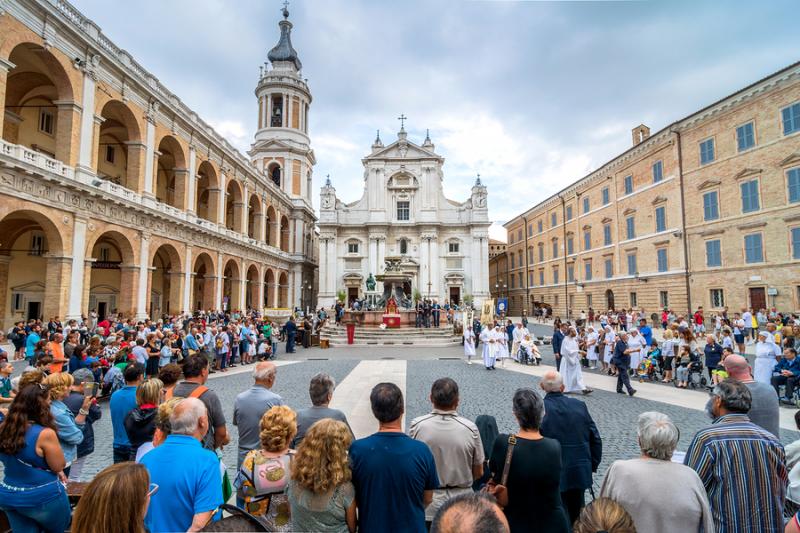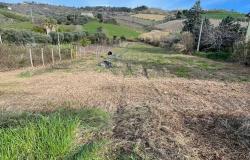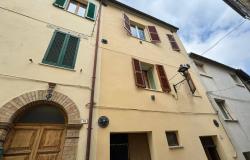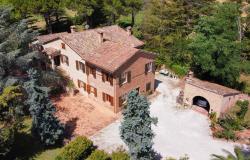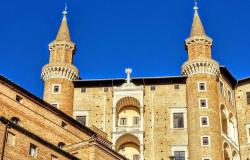There’s a programme about art and architecture on Rai 5 Italian TV called Passepartout, presented by the indomitable Phillipe Daverio. One evening the programme was about Loreto in the Marche, a place I’d never heard of, but which has a curious story.
The home of the Virgin Mary miraculously found its way to Loreto carried by angels, and landed in an olive grove. For the next 200 years it stood there awaiting permission from a pope to build a huge basilica round it. Finally, Bramante designed a fantastically sculpted (by Sansovino) white marble box to house the little building, and then over it the great architects of the renaissance: Bramante, Sansovino and Sangallo, vied with each other in the construction of glorious domed basilica, and Loreto was set to be one of the most important centres for pilgrimage in Italy.

Such an amazing tale naturally inspired a visit to Loreto. Arriving by train gives little preparation for what lies ahead. The inter-city Bologna-Bari train stops for two minutes at the sleepy station which turns out to be a long way from the town. Taxis or the occasional bus will take you up a winding road which suddenly becomes so steep that you think they won’t make it, but of course they do. Rounding the final curve there stands the mighty basilica within its protective walls of terracotta bricks bleached to a cream colour by centuries of sunlight.

There isn’t much to Loreto apart from its cathedral. The narrow cobbled streets and stairs all lead to the Piazza della Madonna, and you emerge to see the pure white baroque façade, usually dazzling against a clear blue sky. On two sides there are galleries with signs for confessions and rooms for treatment of the sick. On the other side there’s a sort of hospital building where nurses dressed in white come and go.
The interior of the basilica is frescoed, with the sculpted white cube standing under the dome. (There’s a copy of it in the city centre of Prague.) Pilgrims enter through the side and walk into the original humble dwelling of brick with fragments of frescoes, probably 12th or 13th century.
 Fresco by Melozzo da Forlì in the sacristy of St Marc
Fresco by Melozzo da Forlì in the sacristy of St Marc
On the altar inside stands the much venerated black Madonna of Loreto, rather like a small Egyptian mummy wearing embroidered white and gold finery. This is a replica. Unfortunately the original was destroyed by fire in the early 20th century. However, she is still a powerful icon, and no doubt because of her home’s journey across the skies carried by angels, she has become the patron saint of aviators. Lindbergh took an image of the Madonna of Loreto on his flight across the Atlantic in 1927.
Of course the tradition of Mary’s house being flown across the seas is just a story, but it is believed by the faithful, and its journey is depicted in stone relief on the white marble walls which surround it. The house is actually thought to have been brought to Loreto brick by brick by the Knights Templar in 1294.
There are regular outdoor ceremonies in the piazza where the handicapped, each one carrying a bouquet of flowers, are wheeled in procession by young volunteers in blue, followed by 50 or 60 nurses in white and a priest under a golden canopy. The spectacle is rather moving and conducted in a hushed reverential atmosphere. There were far more people taking part than the few tourist spectators, and I’m sure we were the only foreigners.

Emerging from the other side of the piazza, the vista over the rolling landscape of the Marche towards the blue hills of Umbria is spectacular.
For those wishing to make the most of a stay in the area, Recanti is only 7 km away. This is where the great Italian poet Giacomo Leopardi lived. His house, including the atmospheric library, can be visited, as can the museum of Beniamino Gigli, the famous tenor singer who also lived in Recanti.
But the little town of Loreto dominated by the basilica with its Casa Santa will leave a lasting impression. It is especially beautiful at night when the buildings and fortifications are illuminated and can be seen from a great distance.
